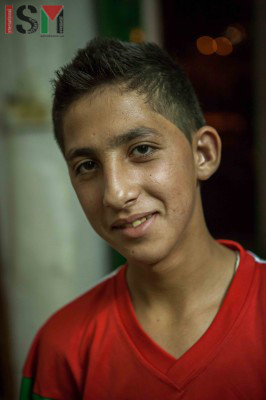Tag: Arrests
-
Update on urgent call – help Mohammed Abu Rahmah
09th May 2015 | International Solidarity Movement, Ramallah Team | Ramallah, Occupied Palestine UPDATED – On the 20th April, Israeli forces arrested Mohammed Adeeb Abu Rahmah while he was on his way to Mecca. Mohammed is the 19 year old son of prominent Bil’in activists Adeeb Abu Rahmah. Father of nine, Adeeb was sentenced for 18 months…
-
Two Palestinian youths violently arrested in Al-Khalil (Hebron)
04th May 2015 | International Solidarity Movement, Khalil Team | Hebron, Occupied Palestine In the early evening of Friday the 1st of May, Israeli forces arrested two Palestinian youths in the Tel Rumeida neighborhood of occupied Al-Khalil (Hebron). Nizar Salhab, accused of attacking a settler was released the same evening, Awne Imad Abu Shamsiyeh was…
-
Nabi Saleh Land Day Protest met with extreme violence and M16 live ammunition
30th March 2015 | International Solidarity Movement, Ramallah team | Nabi Saleh, Occupied Palestine On the 28th of March 2015, close to 200 protesters from all over the West Bank gathered in Nabi Saleh to protest the occupation in commemoration of Land Day. The protest was met with extreme violence as the Army and Border Police fired…



